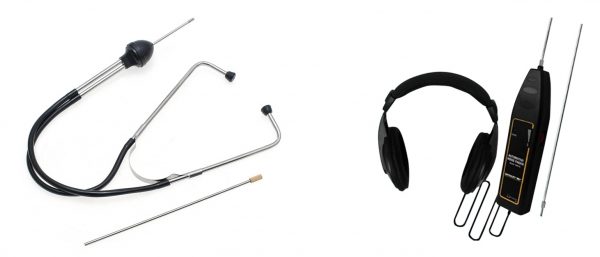Valve noise
Valve and elevator noise usually starts as a click or rattle sound at half the engine speed and disappears at high speeds. The cause is often a large valve clearance or a malfunction of the hydraulic valve lifter.
To check the clearance, we place a smaller measuring sheet between the valve stem and the seesaw or lifter. If the noise is reduced, the cause is too much clearance and you need to make the appropriate adjustments. If it does not reduce the noise, the sound may be caused by a worn lift surface or a worn cam. Another thing to consider involves a lifter that moves loosely in its channel and weak springs.
Piston Slap
The slap of the piston is heard as a muffled ringing sound. This condition is caused by the piston swinging back and forth inside the cylinder. The constant pounding of the piston means that the engine needs to be repaired. However, if this only manifests when the engine is cold, then it is probably not serious.
Piston ring noise
The noise of the piston ring is similar to the noise generated by valves and lifters. However, it is most noticeable during acceleration. Piston ring noise is most often caused by poor ring thrust, broken or worn piston rings, or damaged cylinder walls.
We determine the correctness of piston rings by removing the spark plugs and pouring one tablespoon of oil into the cylinders. Then, start the engine a few turns to allow the oil to pass past the rings. You can then install the spark plugs and start the engine. If the noise is reduced, the rings are probably the cause of the noise.
Piston pin noise
Piston pin noise is similar to valve noise and often has a single double metal knock. Sometimes is most evident during idling with later ignition. This noise is most often the result of a worn or loose connecting rod, a worn connecting rod bearing, or a lack of oil.
You can detect a faulty piston pin by performing a cylinder balance test. This test is performed by briefly switching off the spark plugs one by one during engine operation. A faulty piston pin is detected when the spark plug of that cylinder is turned off. The noise is reduced because there is no ignition of the mixture and no increase in pressure, which creates noise through the pressure of the piston on the worn shaft.
Connecting rod noise
If you hear a light knocking or pounding sound, it can usually come from the connecting rod. This sound is often most obvious when the engine is at a constant speed (does not accelerate or decelerate) and is often caused by a worn connecting rod or crankshaft bearing, a misaligned connecting rod, or a lack of oil.
You can detect a faulty connecting rod by performing a cylinder balance test. A faulty connecting rod is detected when the spark plug of the suspect cylinder is switched off. The noise is reduced because it does not transmit the received power through it.
Crankshaft knock
A heavy but blunt metal thump is a typical crankshaft thump. It is loudest when the engine is under load or acceleration. Crankshaft pounding can be diagnosed if attention is paid to a specific type of pounding. Constant, like rumble-like knock, often comes from worn-out crankshaft bearings. Even more, pronounced thumping is attributed to worn rod bearings. A sharp, irregular impact can be from a worn crankshaft thrust bearing.







